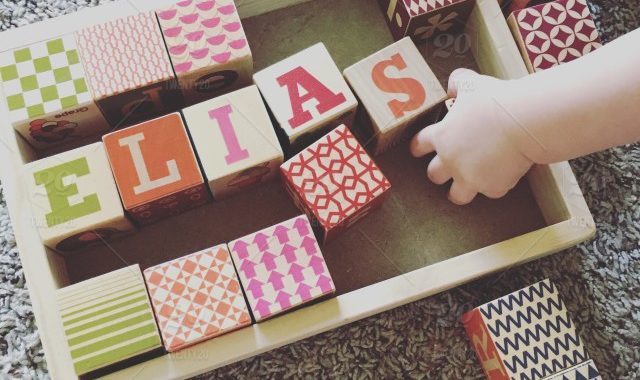Inconsistent or lack of response to his/her name is a significant red flag for autism that can be identified early. In the absence of a hearing difficulty, response to one’s name is expected to develop around 6-9 months of age. We want to encourage this skill for a child with autism as it is a building block to facilitate other important social skills, such as joint attention (here is a video of a toddler demonstrating this skill) and attending to the reactions of others. If your child is delayed in responding to her name, below are some tips to help encourage the development of this skill:
Before you begin these “name-game” steps, choose the time and environment carefully
Pick a time when your child is involved in an enjoyed activity, but one that is not engrossing (not while watching a preferred video). Also pick a time to start when your child is calm and basic needs are met (i.e. not tired or overly hungry). The space should be relatively quiet and free of major distractions.
Get on your child’s level
Get down on the floor so your child does not have to look up at you. Little ones with autism have difficulty referencing people’s faces; you want to make it as easy as possible to find your face. Sitting on the floor during these learning opportunities makes this easier. If your child shifts her eyes, she will see you.
Get in front of him
Sit close to your child, in front of him. Sit close enough so you can easily touch his shoulder. Be in front so he does not have to turn or look around to look in your direction. Again, we want to make it easier for him to find your face.
Have a rewarding object or action planned and ready
Be ready to have something fun or exciting to give your child to reinforce the action of responding to her name. This could be a little treat, a high five, a hug or tickle, a sticker, or any other rewarding action. Play is largely how little children learn. Using fun games, songs, or an incentivized part of an enjoyed activity can be strong motivators for engagement in the “response-to-name game”. For example, if your child enjoys stacking blocks, take control of the blocks, and use each block to reinforce response to name. You hold the blocks and call her name, and when she looks in your direction, even accidentally, you smile and hand over a block. Repeat until the tower is built!
Say your child’s name only 1 time, then if he does not respond, provide a physical prompt to look in your direction
We frequently get into the habit of saying a child’s name repeatedly when he doesn’t respond the first time. This decreases the impact and importance of the child’s name for that child. We want to make his name something to respond to! Set yourself up for success using the previous steps, then say his name loudly and clearly. If your child does not turn his face towards yours in response, quickly tap him for attention or gently lift his face towards yours.
Immediately reinforce the behavior
Provide the prepared rewarding object or action. Don’t worry about eye contact, as it can be very uncomfortable for some individuals with autism. Just reinforce to shifting her gaze in your direction, even when it was accidental or required a physical prompt. Be excited about her participation!
Practice
Repeat these steps for brief periods of time over the day. If your child seems like she is not as engaged or demonstrating responses to the same level as she had previously, then take a break and come back to it later. You can make this “name game” part of regular play (see above example). Play-based ABA type interventions can be very helpful in this manner. For more information as to how to incorporate more naturalistic ABA instruction into your child’s therapy, look into Pivotal Response Treatment (PVT) and Early Start Denver Model (ESDM).
Over time and with practice, your child will demonstrate mastery of this skill. Once your child is demonstrating some mastery, you can practice in other settings and with other people. You can decide how to build this skill, but you will want to move slowly and continue to use engaging activities or desired items as reinforcement.
For more information, please visit the following link: http://www.meghanbarlowandassociates.com/services/early-id-autism-clinic/

